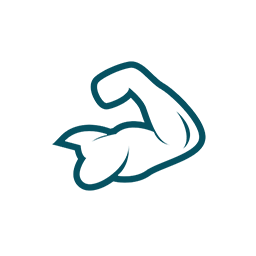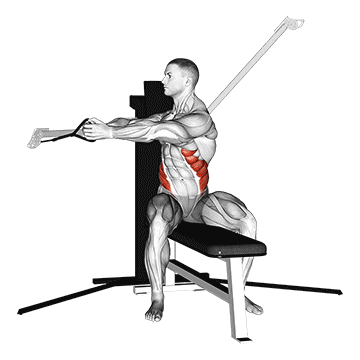The Cable Seated Twist is an abdominal exercise that targets the obliques, and involves using a cable machine to create resistance. This exercise helps to strengthen and tone the core muscles, improve overall stability and posture, and increase rotational strength.
How to perform
Here are step-by-step instructions on how to perform the Cable Seated Twist:1. Sit on a bench or chair with your back straight and facing perpendicular to the cable machine. Adjust the height of the cable to be level with your chest.
2. Hold onto the handle of the cable with both hands, and extend your arms straight out in front of you, keeping a slight bend in your elbows.
3. Engage your core muscles and maintain a straight spine throughout the exercise.
4. Slowly rotate your upper body to one side, keeping your arms straight and allowing the cable to pull you in that direction. Aim to rotate as far as comfortably possible while keeping your hips facing forward.
5. Hold the twist for a moment before slowly rotating back to the starting position. Make sure to control the movement and not allow the cable to pull you too quickly.
6. Repeat the twist on the other side, aiming for an equal number of repetitions on each side.
7. Perform 2-3 sets of 10-15 repetitions on each side, or adjust the weight and rep range based on your fitness level and goals.
8. Remember to breathe throughout the exercise and focus on maintaining proper form and control. It is important to not use momentum to swing your body during the twist, as this can reduce the effectiveness of the exercise and increase the risk of injury.
Equipment required
Cable
Cable equipment consists of adjustable pulleys attached to weight stacks that allow for resistance training. This equipment is commonly used for strength training exercises that target various muscle groups in the body, such as chest, back, arms, and legs. Cable equipment provides a versatile and functional way to perform exercises that mimic real-life movements, improving muscle endurance, stability, and coordination.


